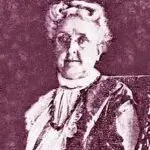Lesson Focus: This lesson can motivate you to recognize the consequences of offenses to God’s holiness, even those we label trivial or unintentional, and work to rebuild the relationships they have disrupted.
Acknowledge Your Guilt: Leviticus 5:1,4.
[1] "If anyone sins in that he hears a public adjuration to testify, and though he is a witness, whether he has seen or come to know the matter, yet does not speak, he shall bear his iniquity; [4] or if anyone utters with his lips a rash oath to do evil or to do good, any sort of rash oath that people swear, and it is hidden from him, when he comes to know it, and he realizes his guilt in any of these; [ESV]
Meaning of the Purification Offering. The purification offering is the fourth type of sacrifice discussed in Leviticus. With this offering the most important distinction is between inadvertent sins and sins of omission or deliberate sins. Like the burnt offering and the cereal offering, this was a compulsory offering, though according to Numbers 28-29 it was offered less frequently than the burnt and cereal offerings. Unlike these sacrifices the material burned on the altar is relatively unimportant: only once is it said to produce a pleasing aroma to the Lord [4:31]. The most important feature of this rite is the sprinkling of the blood on the altar or the veil. Where the blood was sprinkled depended on the social status of the offerer. Most translations and commentators render the Hebrew term for this sacrifice as “sin offering.” This is a natural and obvious translation since the Hebrew word used commonly means “sin.” But there are other sacrifices that also atoned for sin, notably the burnt offering, the peace offering, as well as the reparation offering. Simply to adopt the rendering “sin offering” obscures the precise function of this sacrifice. It most certainly has to do with sin, and deals with its consequences. But it was not the one and only atoning sacrifice. Sin disrupts the relationship between God and man, and between man and man. It poses a threat to the covenant relationship by provoking divine anger. But it has other side effects as well. Propitiation of divine anger is an important element in the burnt offering. Restitution is the key idea in the reparation offering. Purification is the main element in the purification sacrifice. Sin not only angers God and deprives Him of His due, it also makes His sanctuary unclean. A holy God cannot dwell amid uncleanness. The purification offering purifies the place of worship, so that God may be present among His people. This interpretation of the term normally rendered as “sin” seems to be compatible with its root meaning and to explain the rituals of blood sprinkling peculiar to it. A wider variety of offerings was allowed for the purification offering than for other sacrifices. Bulls, goats (male or female), lambs (female), doves, and pigeons are mentioned. If the worshipper was very poor, he could offer one tenth of an ephah of flour instead. It is notable that the male lamb or ram, the most common animal in burnt offerings, is never used for the purification offering, while goats, the standard animal for the purification offering, were not used for the regular burnt offerings. Male and female animals could be used in the purification offering, but only male animals in the burnt offering. This points to the fact that while both types of offering were regarded as essential in worship, the burnt offering played a major role. The burnt offerings required more animals of greater value than the purification offerings. The purification offering began in the same way as the other sacrifices. The worshipper brought his animal to the entrance of the tent of meeting, laid his hand on its head, stated why he had brought the sacrifice, and then killed it. The rest of the ritual was unique to the purification offering. In the burnt and peace offerings the blood of the animal was thrown against the altar. But in the purification offering some of the blood was caught in a basin and the rest was poured away at the foot of the altar. The blood which was set aside was used in a variety of ways depending on who the worshipper was. If the anointed priest was offering the purification offering, the blood was sprinkled seven times on the veil of the sanctuary, that is, the curtain acting as the door into the holy of holies, the innermost part of the tabernacle. If rulers or one of the common people offered a purification offering, the blood was not taken inside the tent of meeting but was smeared on the horns of the large altar of burnt offering that stood in the open court. It is these blood-sprinkling rituals that are the principal focus of attention in the purification sacrifice. The rest of the blood was poured out at the foot of the altar of burnt offering. Leviticus specifies various occasions, mainly private, on which the purification offering must be brought. But there were two general situations in which the purification offering was required. The first situation includes unwitting or inadvertent sins and the second sins of omission which are listed in 5:1-4. The common factor in these sins is that someone knows he ought to do something, but then forgets about it.
The Purification Offering and the New Testament. Under the Levitical laws the blood of the purification offering was used to cleanse the tabernacle from the pollution of sin. We have seen that the primary purpose of this purification was to make possible the continuing presence of God among His people. Many other things used in worship are daubed with blood to make them fit for the service of God: besides the various altars, the veil and the mercy seat, the priests’ vestments and the priests themselves. As Hebrews 9:22 puts it, Indeed, under the law almost everything is purified with blood, and without the shedding of blood there is no forgiveness of sins. For the New Testament writers it is the blood of Christ which cleanses from the defilement of sin. The cleansing from sin that was secured under the old covenant through the purification offering is effected under the new covenant by the death of Christ. Whereas in the Levitical laws it was the place of worship that was purified, under the new covenant it is the worshipper himself. John and Peter merely mention the purification offerings in passing; it is Hebrews that goes into their significance for the Christian in most detail [see Heb. 9, 10]. The writer to the Hebrews stresses the uniqueness and all-sufficiency of Christ’s sacrifice. His death achieved a cleansing for sin which animal sacrifices never could. Unlike them it had only to be offered once to achieve its effect [Heb. 10:19-22]. He draws a parallel between the burning of the purification sacrifice outside the camp and Jesus’ death outside Jerusalem [Heb. 13:10-16].
The Christian Application of Leviticus 4-5. As with the other sacrifices in Leviticus, the coming of Christ has made the purification offering obsolete. Christ’s death has purified us from the pollutions of sin in a complete and absolute way that need never be repeated. Yet this does not mean that we have nothing to learn about sin, its effects and its remedies, from Leviticus 4-5. Leviticus makes explicit that sin defiles the sanctuary: it makes it impossible for God to dwell among His people. Though Israel was still the chosen people, when it sinned it no longer enjoyed the benefits of God’s presence. In a similar way the Christian is warned not to grieve the Spirit by sin [Eph. 4:30]. God’s presence is now mediated by the Holy Spirit indwelling the believer [Eph. 2:22]; that is why Christ’s death has to purify our conscience or heart. There is the continued threat in the New Testament that sin can drive the Spirit from the believer just as under the law God could be driven from the tabernacle. The Christian is told to walk in the Spirit and be filled with the Spirit [Gal. 5:25; Eph. 5:18]. Leviticus also shows that the sin of Israel’s leaders was considered more serious than that of ordinary people. The high priest had to offer more valuable animals than the ordinary man. So too the New Testament insists that God’s judgment on Church members is proportionate to their responsibility [Luke 12:48; James 3:1]. These Old Testament laws also show that unintentional sin is just as much sin in God’s sight as deliberate wrongdoing. Rash promises, unfulfilled duties are just as liable to God separating Himself from us now as under the Old Covenant.
Get Right with God: Leviticus 5:5, 14-16.
[5] when he realizes his guilt in any of these and confesses the sin he has committed. [14] The LORD spoke to Moses, saying, [15] "If anyone commits a breach of faith and sins unintentionally in any of the holy things of the LORD, he shall bring to the LORD as his compensation, a ram without blemish out of the flock, valued in silver shekels, according to the shekel of the sanctuary, for a guilt offering. [16] He shall also make restitution for what he has done amiss in the holy thing and shall add a fifth to it and give it to the priest. And the priest shall make atonement for him with the ram of the guilt offering, and he shall be forgiven. [ESV]
[14-16] The reparation offering, or guilt offering, concludes the list of sacrifices in Leviticus 1-5. As with the other sacrifices, there has been much discussion about its function and purpose in Israelite worship. There has been confusion between the reparation offering and the purification offering due to the misunderstanding of the purification being identical with the sin offering. Closer examination shows that the two sacrifices were quite distinct. The ritual was different. The sacrificial animals were different. The circumstances in which they were offered differed. The function of the reparation offering was not the same as that of the purification offering. In short, different names denote different sacrifices. Insofar as other sacrifices also had to do with the guilt of sin, there is much to be said for calling this the reparation offering or the compensation offering to bring out its precise function. Only a ram or a male lamb could be offered as reparation offerings. The reparation offering is unusual in restricting the choice of animal to one species in this way. Rams and male lambs could be offered as burnt offerings and peace offerings, but other animals could be used too. On the other hand male sheep were never allowed for the purification offering. The choice of animals is the first clear distinction between the purification offering and the reparation offering. The ritual side of the reparation offering is described much more briefly than is the case with the other sacrifices, and it is difficult to be sure of the exact procedure at the altar. The worshipper brought his unblemished ram to the altar of burnt offering. As with the other sacrifices, it was killed there. We are not told that the worshipper laid his hand on the animal, but Numbers 5:7 mentions confession as part of the rite. Since laying on of hands was usually accompanied by confession in other animal sacrifices, it seems likely that it formed part of this one too. As with the burnt and peace offerings, the blood was thrown against the altar. There were no blood-sprinkling rites such as characterized the purification offering. Finally the fat and entrails of the ram were burned on the altar. The situations requiring the reparation offering are set out in Leviticus 5:14-24. The first offense is defined as sinning unintentionally in any of the holy things of the Lord [15]. What constituted an inadvertent sin against the Lord’s sacred property (holy things) is not specified. Eating holy food is one possibility. Perhaps failing to fulfill a dedicatory vow or to present the tithe would also have constituted an offense meriting a reparation offering. Notice that the penalty is in two parts: the man has to restore to the priesthood that of which they had been deprived by his mistake, plus 20 percent. He must also bring a ram to be slain at the altar. The worshipper had to compensate the man he had offended by giving him back what he lost, and had to acknowledge his guilt before God by bringing the sacrificial ram.
Make Amends with Others: Leviticus 6:1-7.
[1] The LORD spoke to Moses, saying, [2] "If anyone sins and commits a breach of faith against the LORD by deceiving his neighbor in a matter of deposit or security, or through robbery, or if he has oppressed his neighbor [3] or has found something lost and lied about it, swearing falsely–in any of all the things that people do and sin thereby– [4] if he has sinned and has realized his guilt and will restore what he took by robbery or what he got by oppression or the deposit that was committed to him or the lost thing that he found [5] or anything about which he has sworn falsely, he shall restore it in full and shall add a fifth to it, and give it to him to whom it belongs on the day he realizes his guilt. [6] And he shall bring to the priest as his compensation to the LORD a ram without blemish out of the flock, or its equivalent for a guilt offering. [7] And the priest shall make atonement for him before the LORD, and he shall be forgiven for any of the things that one may do and thereby become guilty." [ESV]
[1-7] The third situation where a reparation offering was required was quite different. It is again described as trespassing against the Lord [2]. The sin dealt with here is not merely stealing a neighbor’s goods, either by blatant robbery, extortion, or by failing to return property entrusted for safe-keeping [2-3], but the individual has lied by swearing falsely concerning the theft [3]. Oaths by the gods were a common means of settling legal disputes, where other evidence was lacking. By abusing the oath, a person took God’s holy name in vain, and trespassed against His holiness. Therefore a reparation offering was required to make amends. What is striking about this provision is that although the offense was blatant and deliberate, perjury in a public court, yet sacrificial atonement was permitted. The other reparation offerings were for inadvertent sins. So too were the purification offerings, though these were also acceptable for sins of omission. It seems likely that atonement for deliberate sins was possible where there was evidence of true repentance, demonstrated by remorse, full restitution, and confession of sin.
The Meaning of the Reparation Offering. The reparation offering is prescribed for two main types of offenses, trespass against holy things and trespass against God’s holy name by uttering false oaths in court. It could be argued that in this sacrifice the ram was put to death instead of the guilty sinner. Alternatively the ram may be seen as making reparation to God, just as the return of property plus a fifth makes restitution to the man or priest whose goods had been stolen. The reparation offering draws attention to the fact that sin has both a social and a spiritual dimension. It not only affects our relation with our neighbor, it affects our Creator. It influences our relationship vertically with God as well as horizontally with our fellow man. Just as we must put ourselves right with men by paying them back for the wrongs we have done them, so we must compensate our heavenly Father for the debts we run up against Him. The reparation offering thus demonstrates that there is another aspect of sin that is not covered by the other sacrifices. It is that of satisfaction or compensation. If the burnt offering brings reconciliation between God and man, the purification or sin offering brings purification, while the reparation offering brings satisfaction through paying for the sin. The sacrificial system therefore presents different models or analogies to describe the effects of sin and the way of remedying them. The burnt offering uses a personal picture: of man the guilty sinner who deserves to die for his sin and of the animal dying in his place. God accepts the animal as a ransom for man. The sin offering uses a medical model: sin makes the world so dirty that God can no longer dwell there. The blood of the animal disinfects the sanctuary in order that God may continue to be present with His people. The reparation offering presents a commercial picture of sin. Sin is a debt which man incurs against God. The debt is paid through the offered animal.
The New Testament and the Reparation Offering. The reparation offering is never mentioned in the New Testament, but Isaiah 53 is quoted several times and its ideas underlie many passages describing Christ’s suffering. The Gospels underline how Christ was scourged, lest false accusations go unanswered at His trial, was crucified with two robbers, and was buried in a rich man’s grace. All these points may be allusions to Isaiah 53. It therefore seems legitimate to regard Christ’s death not only as the perfect burnt offering, peace offering, and purification offering, but also as the perfect reparation offering, the sacrifice which metaphorically compensates God for our sin. Christ’s death, the perfect reparation offering, has therefore made it obsolete, along with the other sacrifices. It is no longer necessary to attempt to compensate God for our failure by bringing a ram or a lamb to the altar. Our spiritual debts have been written off in the sacrifice of Christ. There is another aspect of the reparation offering that still has a relevance today. The reparation offering focuses on the debt we incur to God by breaking faith with Him or with our fellow man. Where sin includes a wrong against a neighbor, the neighbor had to receive restitution plus a fifth at the same time as the sacrifice was brought. Divine forgiveness was contingent on reparation to the neighbor and sacrifice to God. Similarly the New Testament expects us to make amends to our neighbors if we wish to enjoy peace with God.
Questions for Discussion:
1. Describe the purification offering. What was its purpose? What does it tell us concerning the seriousness of sin? How did it differ from the burnt offering. Why was blood essential to the purification offering?
2. How does the purification offering help us understand the important of Christ’s shed blood on the cross? Imagine if you had to offer a purification offering every time you had a sin of omission. Meditate this week on the awesome blessing we have by all our sins being covered and cleansed by the blood of Christ so that we can remain in perfect fellowship with our heavenly Father.
3. Describe the reparation offering. What was its purpose? Note in this offering there is a twofold payment: the sacrifice in payment to God and the restitution plus 20% to the offended party. What relevance does this offering have for us today?
References:
Leviticus, Richard Hess, EBC, Zondervan.
Leviticus, Robert Vasholz, Mentor.
The Book of Leviticus, Gordon Wenham, Eerdmans.
The Message of Leviticus, Derek Tidball, Inter Varsity Press.

















